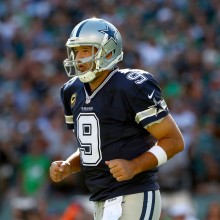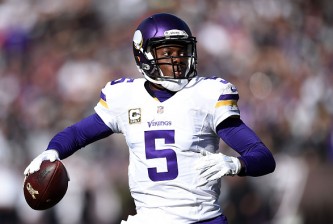As I write this it’s been nearly two full days since The Great Trade Hour of 2015, which is still difficult to fully comprehend. It’s a rare day when the acquisition of Haloti Ngata, a five-time All Pro, can be overshadowed.
Jimmy Graham will have that effect, as will any Jimmy Graham-level player who moves to a team that’s been to the last two Super Bowls. But Ngata somewhat quietly strolled off to the Detroit Lions after a trade with the Baltimore Ravens, a swap made because of his anchor $16 million salary-cap figure in 2015.
To recap, the Lions traded fourth- and fifth-round picks for the versatile 31-year-old hulking defensive lineman. It’s a move that functions as an eager salary dump for the Ravens, a team wiggling against the cap wall. Even after ridding himself of Ngata’s mountainous paycheck, Ravens general manager Ozzie Newsome still has only $10.4 million to play with in free agency.
For the Lions, Ngata is slotted as an immediate Ndamukong Suh replacement after he joined the Miami Dolphins and became the highest paid defensive player in league history. But of course, there’s never an Ndamukong Suh replacement.
Ngata is three years older than Suh, and he comes with a whole lot of positional flexibility. He’s been effective as a 3-4 defensive end and a 4-3 tackle, with his bull-rushing strength difficult to contain from both the edge and interior. Ngata has also anchored a defensive front as a nose tackle. He’ll take on that role again if Lions defensive coordinator Teryl Austin makes the right decision and alters his base formation, going with a 3-4.
The nine-year veteran has excelled primarily as a run stuffer regardless of where he’s positioned when the ball is snapped. In that sense he can be Suh’s equal, and is therefore the ideal space-clogging nose tackle.
Ngata missed four games during the 2014 season due to a suspension, so for a recent comparison it’s best to look back to 2013. That’s when he recorded 26 defensive stops, according to Pro Football Focus, a notch above Suh’s 25. Throughout his career Suh has averaged 47.8 tackles per season, while Ngata has moved along at a pace of 49.4.
At 340 pounds Ngata has impressive mobility for his size. He can penetrate deep into the backfield, disrupting the rhythm of a run and its intended design. Or an can just erase running lanes entirely by shedding blocks.
The cavernous separation between Suh and Ngata lies in pass rushing, and how much of it the Lions are losing now. Over five seasons Suh has reached or exceeded the eight-sack mark three times as an interior rusher. His career sack count currently rests at 36, an average of 0.46 per game.
Ngata? He’s played four more seasons and still has 10.5 fewer sacks (a career average of 0.19 per game). Using 2013 as a comparision year again, Suh finished second in the league with 72 total pressures, per PFF, a season when Ngata logged 19.
That seems like an unfair comparison because Ngata was primarily used as a nose tackle in 2013. But that’s the overarching impact of this trade: With his greater size (Suh weighs 305 pounds) Ngata is ideally suited for a role that places an emphasis on run defense. Which is surely how Austin will use him on the interior. He’ll help to maintain a run defense that was already imposing, giving up only 69.3 rushing yards per game in 2014 (a league best).
But the pass-rushing subtraction is significant, especially when it’s coupled with the impending loss of Nick Fairley. He’s also a free agent and is visiting the St. Louis Rams Thursday, according to NFL Network’s Ian Rapoport. Fairley had an injury-shortened season in 2014 and only recorded one sack. However, he had 11.5 over the previous two years combined.
Suh’s departure leaves a gaping hole for a Lions pass rush that finished eighth with 42 sacks this past season, which is why Austin would indeed be wise to make a change up front. Moving to a 3-4 is the best way to utilize Ngata’s skillset, and beyond him the Lions have pieces to make that transition relatively pain free.
Pass rushers who can stand up and play outside linebacker become critical for any defense attempting to make the shift. For the Lions, Kyle Van Noy was used as an outside linebacker at BYU, where he recorded 26 sacks over four seasons. Then there’s Ziggy Ansah, who posted a blistering 4.56 time in the 40-yard dash during his Scouting Combine appearance. He easily has the speed to turn the corner as an outside linebacker.
More change is the best way to ensure a high return on the two mid-round picks invested in Ngata. His prime years may be coming to an end, and he could be entering a decline phase soon. But in the short term he can at least match Suh as a run defender, while a re-alignment partly/hopefully takes care of the pass-rushing void.























